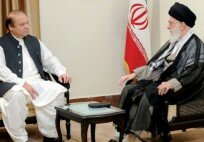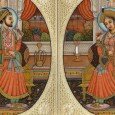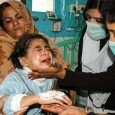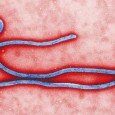By Sidrah Roghay –
The Pakistan People’s Party despite its three-decade long rule in the province has miserably failed to impart even primary education in Sindh
In the historic October 21 rally in Karachi, Bilawal Bhutto Zardari, the young Pakistan People’s Party chairman, spoke strongly against the Taliban and extremism—for the two discourage critical thinking and push the country into obscurantism. “They [the Taliban],” he said, “are scared of the girl with a book.”
Closer home, in its largely rural vote-bank of Sindh, more than half of its children remain out of school, states a recent report released by Alif Ailaan, an education advocacy campaign. Sindh is worse off than terrorism hit Khyber Pakhtunkhwa which manages to send 66 percent of its children to school.
This may come as a shock for the liberal PPP which for long has bemoaned the Taliban for bombing girls’ schools. In its election manifesto for this term, the party promises universal primary education. Despite being in power for three long decades it has only done lip service to education—a fundamental right that the constitution guarantees.
Pique takes a look at the dwindling education figures from hometowns of notable PPP politicians.
Larkana
This is the land of the great Bhuttos. Here, inside a white marble mausoleum lie the Oxford educated Benazir Bhutto and her charming father Zulfiqar Ali Bhutto. Larkana is hometown of the senior minister for education and literacy in Sindh, Nisar Khuhro. Here, 34.6 percent children remain out of school. Among the children who do attend school there is great gender disparity. Only 30 percent students in a classroom are girls.
Learning levels in Urdu and Sindhi are such that 20 percent children in grade-five cannot read a single word in their mother tongue. Arithmetic skills are such that 44.5 percent children in grade five cannot do a two digit subtraction sum. Only 20 percent children in grade five can read a sentence in English.
Illiteracy has plagued the previous generation too. Only 21 percent mothers and 48 percent fathers have completed their primary education.
Khairpur
The octogenarian three time chief minister of Sindh, Qaim Ali Shah, still visits his ancestral palatial house here. On his travels he chooses to ignore the plight of education at schools.
Here 42.9 percent children remain out of school. Among the children who attend school, girls continue to lag behind. At government schools their representation is only 35 percent and at private schools the number is even lower at 27 percent. Learning levels in Urdu and Sindhi are such that 37 percent cannot read a sentence in their mother tongue.
Arithmetic skills are so weak that 41.4 percent students in grade-five cannot solve a two-digit subtraction sum. Only 20 percent mothers and 45 percent fathers in the district have completed their primary school education.
Dadu
This is the hometown of former education minister in Sindh, Pir Mazharul Haq. His son Pir Mujeebul Haq, currently a parliamentarian and a lawyer by profession, was part of the prestigious Lincoln’s Inn, the same institute which once trained Quaid-e-Azam Muhammad Ali Jinnah.
At Dadu, 36 percent children remain out of school. Among the children who are getting some sort of schooling there is again a wide gender disparity. Against every 13 boys at a government school, there are seven girls.
Learning levels of Urdu and Sindhi are so low that 19.3 percent children in grade-five cannot read anything in their mother tongue. Only 27 percent children in grade-five can read a sentence. When it comes to arithmetic skills, 40 percent students in grade-five cannot solve a two-digit subtraction sum. Only 22 percent mothers and 59 percent fathers have completed their primary education.
Thatta
This is the land of the clever Owais Muzaffar. This district tops the list of closed schools in the province — 729 — according to a survey by the education department. Add ghost schools to it and the figure balloons to 897.
Here 66 percent children are out of school. For students who start school drop-out remains a pressing problem. At middle school level enrollment drops to a shocking 6 percent. Ninety percent students of class six cannot read a story in Urdu or Sindhi.
Through the efforts of the PPP, last year Sindh became the first province to turn Article 25A into legislation. It declares that free and compulsory education for children aged five to 16 is a right everyone is born with. But for now, it will take more than a legislation to send the children of Sindh back to school.
Back at the education department, no one seems to have a direction. Despite repeated reports revealing the shocking state Sindh’s education is in officials seem to be in denial. “Not many children in Sindh are out of school. But yes we do face a problem of closed schools,” said Khursheed Ahmed Junejo, chairman standing committee on school education in Sindh.
“We intend to penalize parents for not sending children to school. We intend to open all closed schools this year. We will ask not-for profit organizations to adopt schools,” he added.
The year has almost ended. Sindh’s children are waiting to access what the constitution guarantees is a right they are born with.
*Figures for the out of school children have been taken from an Alif Ailaan report titled 25 Million Broken Promises ** Figures for school performance have been taken from the ASER 2013.































































































